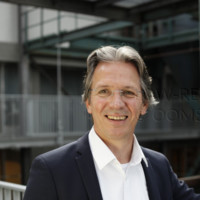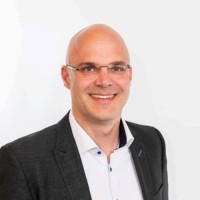The summit of data hunger is rising, here’s how to conquer it
The hunger for data rises exponentially. Globally, we generate 2,5 quintillion bytes of data each day. In 2015, data centers all over the world consumed 40 percent more electricity than the entire UK in that same year. As consumers, we demand more and more from our devices and from the internet of things. Consequently, the technology behind our products, becomes more ingenious by the day. As a result, conventional interconnect technology is hardly sufficient anymore and even faces signal degradation.
Let’s talk photonics with PI and CITC
The alternative for conventional interconnect systems, is already here: integrated photonics. Recently, Tegema, together with PI, reached a breakthrough in building a profitable business case around integrated photonics with a modular machine platform. The platform speeds up the assembly process, and it turns the production of integrated photonic devices into a cost-efficient process.
Sander Slagter, Senior Technical Sales of PI Benelux, recently sat down with Sander Dorrestein, who is a Senior Researcher in Micro-Electronic and Micro-Optical Packaging at the Chip Integration Technology Center in Nijmegen. They had a heart-to-heart talk about the future of photonics. Sander Dorrestein was the architect of the photonics assembly speed-project at Tegema and, through various positions, has been involved in the world of photonics for over 10 years. Sander Slagter gladly shares Sander Dorrestein’s insights in this visual article.
Sander Dorrestein: “Integrated photonics are extremely capable to carry the ever-increasing data load. Next to that, it encompasses speed, scalability, and possible future applications we haven’t even thought of. Optical, integrated photonics technology delivers faster transport of data, over longer distances, and it consumes less energy. Photons over electrons, so to speak. The technology is promising, but why haven’t manufacturers embraced it ‘en masse’ yet? This is mostly because until recently, the costs for the production of photonic applications were staggeringly high.”
Sander Dorrestein: “A short while ago, at Tegema and PI Benelux, we reached a breakthrough. Not only in reducing the costs of production, but also in cycle time. Our modular machine platform enables manufacturers to bring new optical devices to the market in a short period of time. This machine production line for photonic device assembly is the culmination of years of research and field experience in integrated photonics.”
Building a business case around active optical alignment
Sander Dorrestein’s career runs parallel to and intertwines with global developments in photonics. At the beginning of his career, he was preoccupied with material laser processing at Philips and got gradually involved in the topic of photonics and active optical cables with TE Connectivity.
Sander Dorrestein: “During that time, I never managed to built a strong case around the active alignment of optical cables. No matter how I looked at it, it always turned out to be too expensive. The assembly-process was too slow and the investment costs for hardware too high. Besides that, no solution was ever able to fluently find its place into the market. However, even though copper cables are cheaper, they can’t live up to the requirements of data-heavy applications anymore. So, we absolutely needed to find a way to make photonics profitable.”
“Conventional interconnect technology can’t live up to the requirements of dataheavy applications anymore”
Sander Dorrestein: “These high investment costs mainly lie in the process of assembling, packaging and testing of the integrated photonic devices. That infrastructure is limited. That’s why most manufacturers rather work with micro-electronics and it’s also the reason why the growth of integrated photonics has faltered. A shame really, because the photonics market is ready – and yearning – for faster, more accurate and cost-effective equipment.”
High accuracy and ultrafast alignment on a micro-scale
After Sander Dorrestein transferred to Tegema, he came into contact with Arno Thoer who had developed a universal modular machine platform. Together, they turned it into a photonic micro-assembly platform that has an exit rate 10 times faster than current available solutions.
Sander Dorrestein “This impressive fast cycle time, was partly delivered by another groundbreaking technology, engineered by American head of photonics at PI, Scott Jordan. The heart of the machine is formed by PI’s active alignment hardware, hexapods, and software routines. It enables high accuracy on a micro-scale and ultrafast alignment of two small optical elements during the packaging process. Where it takes similar machines almost five up to twenty minutes to complete this process, Tegema’s machine can deliver a packaged product, including active alignment and fiber termination, in just under 30 seconds.”
Sander Dorrestein: “Other aspects that help to cut costs, are the reduced cost of ownership, the lower investment costs, and the modular growth footprint. Also, the machine occupies up to 50 percent less expensive floor space in cleanrooms than other machines.
The modular design enables manufacturers to start small with their production volumes and scale up, or even down, when they need to. In other words: Tegema and PI have come up with the missing link that empowers the much needed breakthrough of photonics. It’s precisely what manufacturers and consumers - who are craving more intelligent cars, homes, and devices - have been waiting for.”
Bringing experts and knowledge together to empower the revolution of photonics
So: ‘the’ machine has arrived. What is next for photonics? Sander Dorrestein has made his biggest step yet: he is now involved with CITC, which specializes in integration and advanced packaging of photonics. It’s a non-profit joint innovation center that aims to bridge the gap between industry and academics on this topic. The center aspires to bring together researchers, institutions, and the commercial industry, to create even better solutions. By sharing knowledge, CITC wants to speed up the go-to- market process of new innovations in the field of photonic packaging.
With the new innovative modular machine platform, the founding of CITC, and the ever-increasing demand in faster digital devices, Sander Dorrestein envisions a bright future for photonics and integrated photonic devices.
Sander Dorrestein: “All these developments will form the dawn of photonics as a widely used technology. It will lead to mass production of devices with photonic chips and, at the same time, it will lower the costs of consumer products that use optical technology.”
“The future possibilities of photonics are endless. Traditional electronic interconnect technology enables us to download one Netflix movie per second. If data centers use fiber optics, they can easily let 57.000 users download a movie at the same time. And this is where the world is headed. The way I see it, we have no choice other than to embrace photonics. The global hunger for data grows by the day and integrated photonics is the answer to how we can conquer that data summit in a sustaining manner.”
About Micro Talk
With our passion for anything technical, physics, and technology, we love to pick each others brains on these topics every day. Not just as colleagues. The PI Benelux team holds so many interesting conversations with other experts, researchers, peers, or technical engineers, we can hardly call it ‘work’. And, sometimes, these kind of small talks, or as we say ‘Micro Talks’ are too interesting not to share. So, why not make it a recurring item on our website?







